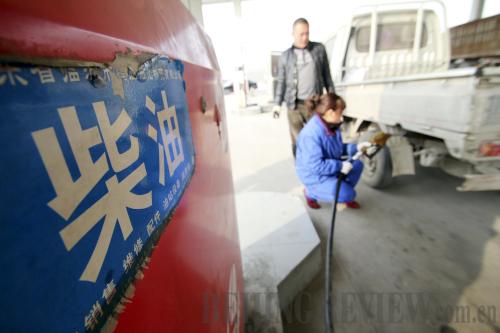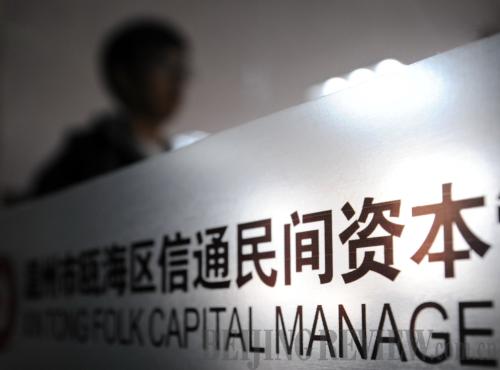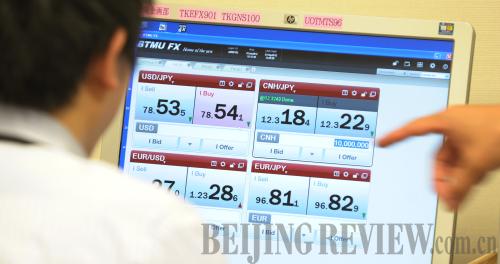|
 |
|
A privately owned gas station in Shandong Province (ZHANG CHUNLEI) |
Several ministries issued provisions allowing private capital to invest in monopolized industries in an unprecedented move to spur more competition.
In May, the China Banking Regulatory Commission released new provisions to support private capital entering the banking sector.
In June, the Ministry of Industry and Information Technology unveiled provisions to encourage the presence and participation of private capital in the telecom industry.
That same month, the Ministry of Commerce released regulations on allowing more private capital to enter the commercial, trade and logistics sectors. The new regulations state that private companies have access to the transportation and retail sales of refined oil products. More government subsidies will be earmarked to solve the financing problems of private small and medium-sized enterprises engaged in commerce, trade and logistics.
In July, the Ministry of Culture released provisions to attract private investment in the cultural sector.
 |
|
The Xintong Folk Capital Management Co. was established on February 28, the first private capital management company in China (WANG DINGCHANG) |
China launched state-led financial reforms to better support the economy.
On March 28, the State Council gave the go ahead to establish a pilot zone for comprehensive financial reform in Wenzhou, Zhejiang Province, China's private sector powerhouse. The plan requires the city government to set up a financial mechanism to facilitate the locality's social and economic development. It also outlines 12 tasks for the city to focus on during the reform process, such as encouraging and supporting the participation of private capital in local financial institutions.
On April 12, Shenzhen, the origin of China's economic reform in the late 1970s, followed suit with guidelines for financial reforms. The focus of Shenzhen's financial reforms will be to serve the development of the real economy, including the introduction of pilot two-way trans-border loans between the mainland and Hong Kong, the establishment of the Shenzhen Qianhai Equity Exchange before the end of 2012 and the development of the innovation bond market.
Up to now, 16 pilot zones have been set up to connect technology and finance in such cities as Tianjin and Chengdu, and the Central Government is seeking further financial innovation to offer support to scientific and technological enterprises.
 |
|
A bank clerk in Tokyo checks the yen-yuan exchange rate on June 1, the day direct yuan-yen trading in Shanghai and Tokyo capital markets began (XINHUA) |
China took a vital step forward for the internationalization of the renminbi in 2012 by improving the currency's pricing mechanism. China gave the yuan a wider trading limit, approved direct yen-yuan trading in the Shanghai and Tokyo markets, launched the RQFII pilot program and expanded the investment quota twice in 2012.
On April 16, the People's Bank of China widened the trading band for the yuan against the U.S. dollar to 1 percent from 0.5 percent for the first time since 2007.
The country brought its yuan one step closer to becoming a global currency by allowing direct trade with the Japanese yen, starting from last summer, making the yen the first major currency besides the U.S. dollar that can be directly traded with the yuan.
China also allowed the backflow of the currency by establishing a new mechanism for the backflow of overseas yuan funds—the renminbi qualified foreign institutional investor (RQFII) program, which was launched at the end of 2011 with an initial quota of 20 billion yuan ($3.18 billion).
On April 3, the RQFII pilot program was expanded to 50 billion yuan ($7.94 billion) in investment quota from the previous 20 billion yuan ($3.18 billion).
On November 13, the RQFII quota was again raised by 200 billion yuan ($32.12 billion).
Besides raising the investment quota, the CSRC will also consider further improving the RQFII system by expanding its investment scope and relaxing investment restrictions so as to allow more Hong Kong financial institutions to apply for the RQFII.
| 